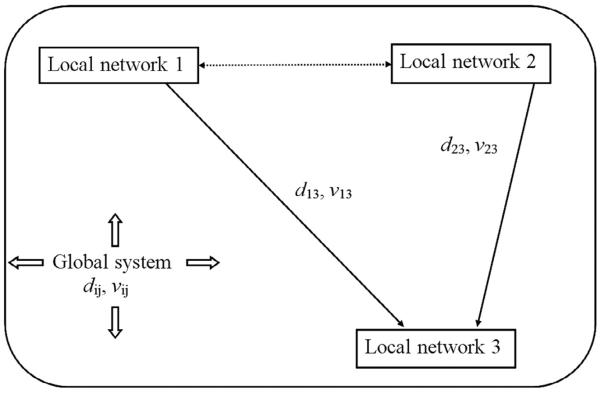Fig. 1.
Three semi-autonomous local networks are shown here as embedded in a global system of synaptic and action potential fields. “Semi-autonomous” indicates that, to first approximation, each local network is unconnected or only very weakly connected to other networks so as to produce truly “local” oscillation frequencies. By contrast, any introduction of strong functional connections (e.g., the dashed arrow between networks 1 and 2), results in larger scale (regional) networks with new oscillation frequencies. The inputs from networks 1 and 2 to network 3 arrive at approximately the same time only if axon speeds v13, v23 are adjusted to account for different separation distances d13, d23. The global system of white matter axons involves a broad range of interaction distances dij and axon speeds vij between pairs of cortical locations ij, resulting in global oscillation (resonant) frequencies that can act top-down on local networks, modulating or facilitating local oscillations and providing a global binding mechanism in addition to local/regional binding.

